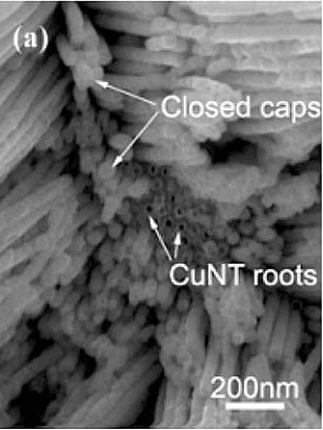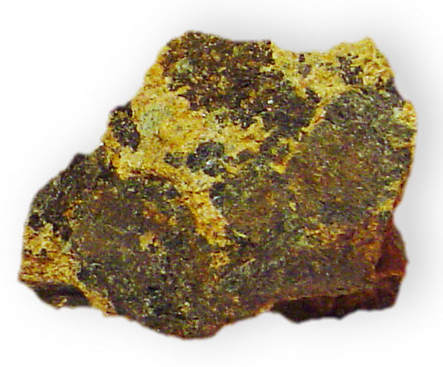|
A warning to my more sensitive readers: This post contains some rude terms and juvenile humor! “Get you mind out of the gutter!” is a common exhortation used on a person who interprets things or thinks about things in indecent ways. In our culture, having your mind in the gutter is clearly considered to be something negative. However, sometimes having your mind in the gutter, or having someone around with their mind in the gutter, can actually be an advantage. How can this be? A joke in the biotech industry involves the owner of a genetics company who is thinking about the name he should give to a new branch of the company that he is planning to open in Italy. The owner innocently decides that because his company is a genetics company, and because the new branch is opening in Italy, he will call the new branch of the company "Gen-Italia". It is in situations like these where having someone around with their minds in the gutter can be useful to spot the vagaries of language and slang. The above is just a joke, but consider the true story of a company called “Custom Service Chemicals”. Back in 1964 they paid a marketing firm to suggest a new name for them. The marketing firm came up with a combination of the words “Analytical” and Technology” which perfectly described what the company was doing, and thus they changed their name to “Analytical Technologies”, which they fatefully proceeded to abbreviate to “AnalTech”. Apparently no one involved in the name-change operation had their mind in the gutter to spot the obvious problem with the new name. As a result of this, the company has been the butt of jokes (get it?) for all of its existence culminating in one memorable episode in 2017 when newspapers reported that a truck had plowed into AnalTech creating a hole which released an odor that led to a HazMat situation. The company has sometimes complained about the puerile humor it is subject to, but they get no sympathy from me!  Oh no you don't! Oh no you don't! However, the AnalTech story is nothing compared to the fiasco that beset no other than the company Pfizer. Pfizer is a pharmaceutical giant with 90,000 employees selling products in 90 international markets and generating billions of dollars in profits. This is the company that brought us penicillin and Viagra. Pfizer normally functions like a well-oiled machine when it comes to advertising their drugs, but in 2012 they experienced a major breakdown. At the time Pfizer had come up with a drug for osteoarthritis in dogs called Rimadyl, and they wanted to put together a marketing campaign to promote it. Unfortunately there was no one in their marketing team with their mind in the gutter to enlighten them. Thus it was that to encourage people to use Rimadyl on their ailing dogs, they invited their customers to “rim-a-dog”; in other words, apply Rimadyl to their canine friends. Pfizer even created a long-gone website: rimadog.com. Alas, if someone had even made a cursory search of possible slang meanings of the verb “to rim” they would have averted the catastrophe. In response to the public outcry from dog lovers, Pfizer apologized and modified their marketing of Rymadyl, but it was too late. They had already left a permanent mark in the annals (sorry, couldn’t resist using that word) of botched marketing campaigns. Sometimes what happens is that the people involved in coining a problematic name are foreign individuals who are not well acquainted with American slang. The Hungarian Nobel Prize winner Albert Szent-Györgyi discovered vitamin-C and found that paprika contained large amounts of it. This was a godsend to the depressed economy of the Hungarian town of Szeged where Szent-Györgyi resided in the early 1930s. Merchants and scientists joined forces to produce and sell a paste derived from paprika which was christened “vitapric”. Sales of the paste were so good in Europe that Szent-Györgyi and his colleagues wanted to sell vitapric in the United States. Luckily for them, someone with their mind in the gutter advised them to change the name of the product!  However, a group of Chinese researchers were not that fortunate. Dachi Yang, Guowen Meng, Shuyuan Zhang, Yufeng Hao, Xiaohong An, Qing Wei, Min Yeab and Lide Zhang discovered a method to make very small tubes (nanotubes) using metals like bismuth and copper. To name their creations they used the abbreviation for the word nanotubes “NT” preceded by the chemical symbols of bismuth (Bi) and cooper (Cu). Thus they referred to bismuth nanotubes as “BiNTs”, and cooper nanotubes as “CuNTs”. But what really cemented the fame of this Chinese group for posterity was that they wrote up the results and got them published in a mainstream English language scientific journal. Thus in their paper entitled “Electrochemical synthesis of metal and semimetal nanotube–nanowire heterojunctions and their electronic transport properties” you find no less than 12 references to “BiNT/s” and 50 references to “CuNT/s”. It seems that not a single person with their mind in the gutter was involved in the process of review and editing of the paper. Adding insult to injury, the Chinese research group received the 2007 Vulture Vulgar Acronym (VULVA) award from the British technology news and opinion website The Register. Of course, it’s not always a foreigner unacquainted with English slang who dreams up these terms. In 1972 doctors Alexander Pines, Michael Gibby, and John Waugh developed a new procedure for high resolution nuclear magnetic resonance (NMR) of rare isotopes and chemically dilute spins in solids. This was a significant breakthrough because up to that moment NMR could only be applied to liquids. But then the authors proceeded to name their new technique: Proton Enhanced Nuclear Induction Spectroscopy. The problem with this name is, of course, the acronym. These naughty scientists went on to publish scientific articles where the name of the technique was prominently displayed in the tittle. It seems that no reviewer or editor with their mind in the gutter caught on to the joke. For the sake of decency most scientists nowadays refer to the technique as “cross-polarization”. While the name for the NMR technique was intended, some rude acronyms may have just arisen unintentionally from names put forward by people with insufficiently dirty minds. Thus the short denomination for the enzyme argininosuccinate synthetase is “ASS”, the cell culture substrate poly-L-ornithine is abbreviated as “PORN”, and the muscle relaxant and murder weapon, Suxamethonium chloride, is called “Sux”. Some scientific disciplines have certain traditions or follow some methodologies that make them prone to generating silly or rude names.  Cummingtonite Cummingtonite In geology there is a custom of naming a new mineral by adding the suffix “-ite” (a word derived from Greek meaning rock) to whatever the mineral is named after. But this tradition can create problems when there is no one around with their mind in the gutter. For example, when a new mineral made up of magnesium, iron, and silicon was found in the locality of Cummington in Massachusetts it was christened “Cummingtonite”, when a new mineral made up of calcium, silicon, and carbonate was discovered in a mine named “Fuka” in Japan, it was branded “Fukalite”, and a mineral made up of silicon and aluminum was named “Dickite” in honor of chemist Allan Brugh Dick who discovered it. In chemistry, when a new chemical compound is isolated from a plant, often the name of the particular chemical form of the compound is combined with the name of the genus or the species of the plant. The problem is that several plants do not have the most innocent of names, and there seem to be either a dearth of chemists or the people who vet these names with minds in the gutter. Thus “vaginatin” was isolated from the plant Selinum vaginatum, “erectone” was isolated from the plant Hypericum erectum, “clitoriacetal” was isolated from the plant Clitoria macrophylla, “nudic acid” isolated from the plant Tricholomo nudus, and so on.
I could go on, but from all these examples you get the idea. So next time someone is chastised for having their mind in the gutter, intervene and quote a few of these examples to make the case for the usefulness for such a mind in science! I have taken some of the examples listed in this post from Paul May’s amazing webpage “Molecules with Silly Names” and combined them with my own research. Mr. May has also written an eponymous book that can be bought on Amazon. Dog image by Calyponte used here under an Attribution-Share Alike 3.0 Unported license. The image from the copper nanotube article is a screen capture used here under the legal doctrine of Fair Use. The image of Cummingtonite by Dave Dyet is in the public domain.
0 Comments
|
Details
Categories
All
Archives
June 2024
|
 RSS Feed
RSS Feed